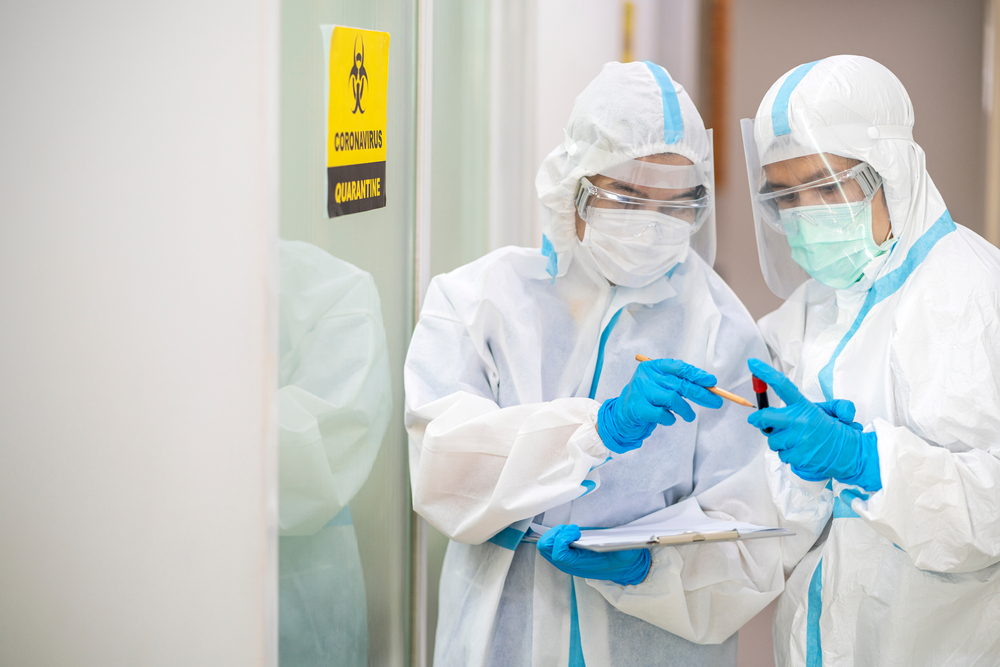Using predictive analytics software tools to combat COVID-19

COVID-19 has reshaped the way humans interact with technology in healthcare. Intelligent data, technology, artificial intelligence (AI) and machine learning (ML) have started to lighten the burden and establish new ways to facilitate sustainable demand and supply. But at the helm of this transformation are predictive analytics software tools.
Predictive analytics in healthcare is rapidly becoming some of the most-discussed in healthcare analytics. The enormous amount of data the pandemic generated has given researchers and providers the opportunity to analyse trends, monitor patient populations, and begin to rectify long standing issues in the healthcare industry.
The ability to anticipate future events is critical in the midst of a healthcare crisis, and predictive analytics software tools can help healthcare entities do that. They are helping healthcare organisations stay ahead of poor outcomes, resource shortages, and other regressive impacts of COVID-19.
Furthermore, organisations are turning to predictive models to better understand which patients are at risk, where resources are most needed, and where the disease is likely to spike next. To further understand the true impact of predictive analytics models, let us dive straight into the potential benefits to boost our fight against the pandemic.
The ability to forecast disease severity and risk
Determining which patients are most at risk for contracting the virus – and which individuals are likely to experience poor outcomes from COVID-19 – is perhaps the most important use case for predictive analytics during the pandemic.
Researchers and data analysts have worked to uncover the factors that may influence disease susceptibility and severity, aiming to get ahead of surges in cases, hospitalisations, and deaths.
Applying machine learning approaches to data from a large cohort of patients with COVID-19 resulted in the identification of accurate prediction models for mortality. The ability to accurately predict whether or not a patient is likely to test positive for COVID-19, as well as potential outcomes including disease severity and hospitalisation, will be paramount in effectively managing our resources and triaging care.
As we continue to battle this pandemic and healthcare professionals prepare for a potential second wave, understanding a person’s risk is the first step in potential care and treatment planning.
Preparing for hospital capacity vs demand
With the rapid spread of COVID-19, many hospitals and health systems are faced with the possibility of sudden surges in patient volume, resulting in limited resources, and increased burden on staff.
To better plan for these potential surges, organisations have implemented predictive tools to help allocate resources. With predictive analytics software tools, you can match the daily demand of hospitals with their necessary resources i.e beds, staff, PPE and other supplies.
Predictive analytics software tools provide timely, reliable information to forecast patient volume, bed capacity, and ventilator availability to optimise care delivery for COVID-19 and other patients. These platforms can track local hospitalisation volumes and the rate of confirmed COVID-19 cases. Furthermore, these models can help anticipate and prepare for increasing COVID-19 patient volumes with 85 per cent to 95 per cent degree of accuracy by running multiple forecasting models.
Mapping the virus’ journey
In a situation as unpredictable as a global health crisis, having some idea of which areas will be most impacted can help public health officials and providers get ahead of poor outcomes.
Using predictive analytics software tools, researchers can find patterns and trends in different places that can inform social distancing guidelines and other preventative measures.
Currently, hospitals and governments have developed several predictive analytics models to examine COVID-19 trends and patterns around the world. Researchers believe that past data encodes all the necessary information.
Predictive models could also demonstrate the importance of other COVID-19 regulations, like wearing masks.
Predictive analytics software tools at the center of healthcare innovation
As the pandemic continues on, predictive analytics will continue to play a significant role in monitoring the impact of the virus, from patient outcomes to areas of increased disease spread. The global health crisis has only further highlighted the importance of predictive analytics in healthcare, and can accelerate the use of these tools in standard care.
These models can help hospitals, health care facilities, state health departments and government agencies forecast the impact of COVID-19 and prepare for the future.
Visit our website for more information on how predictive analytics software tools could revolutionise the global approach to the pandemic.
